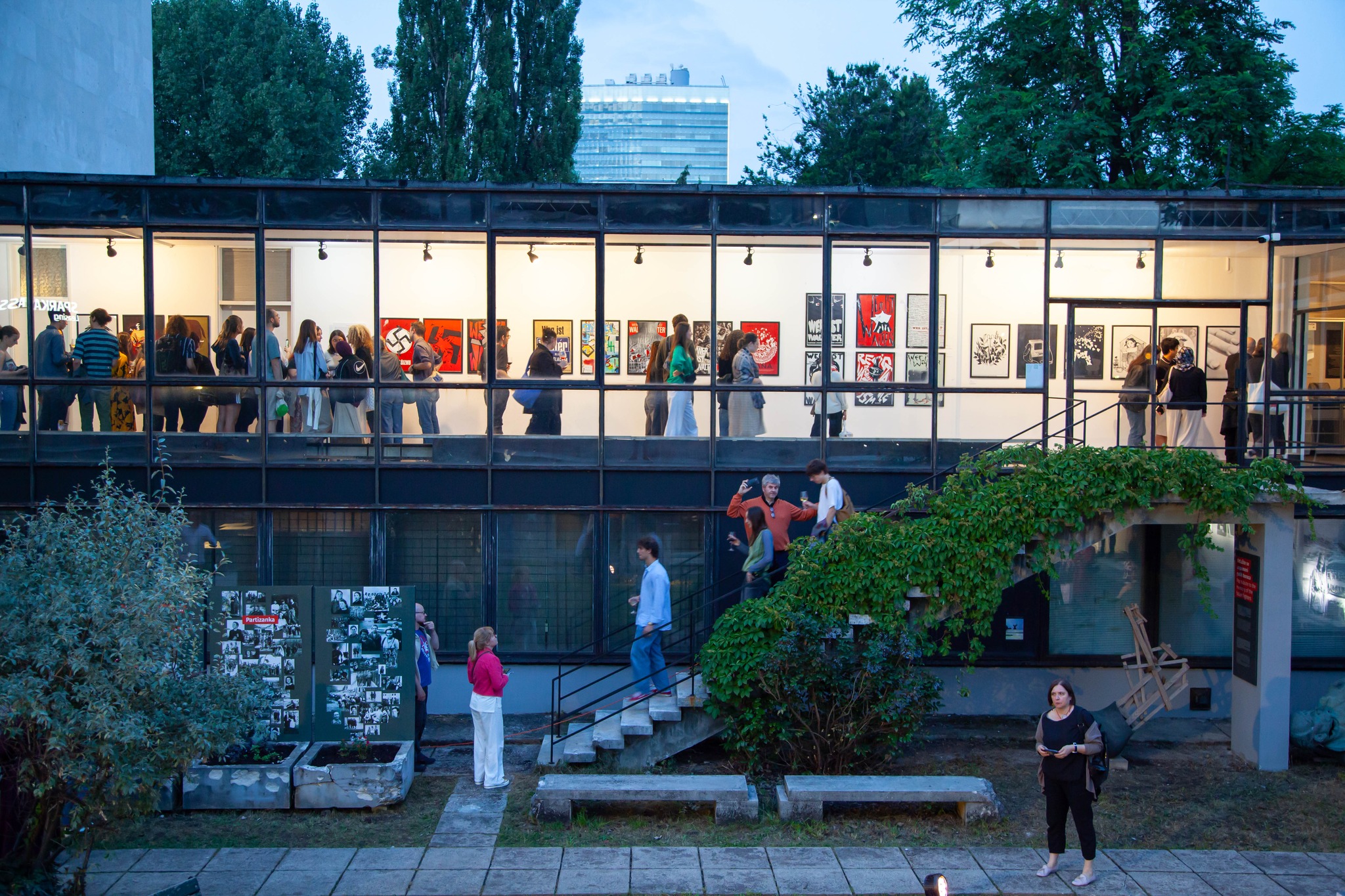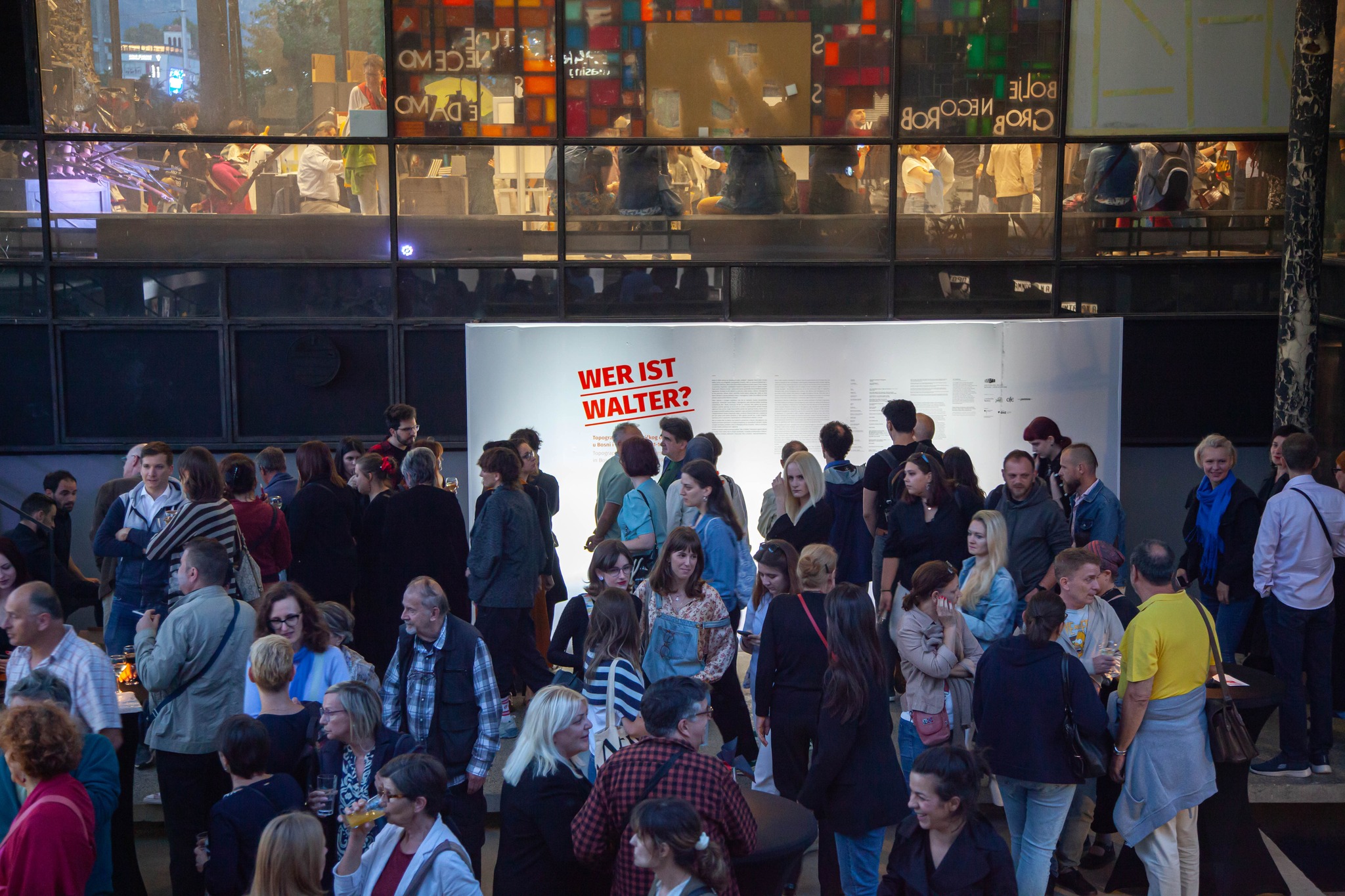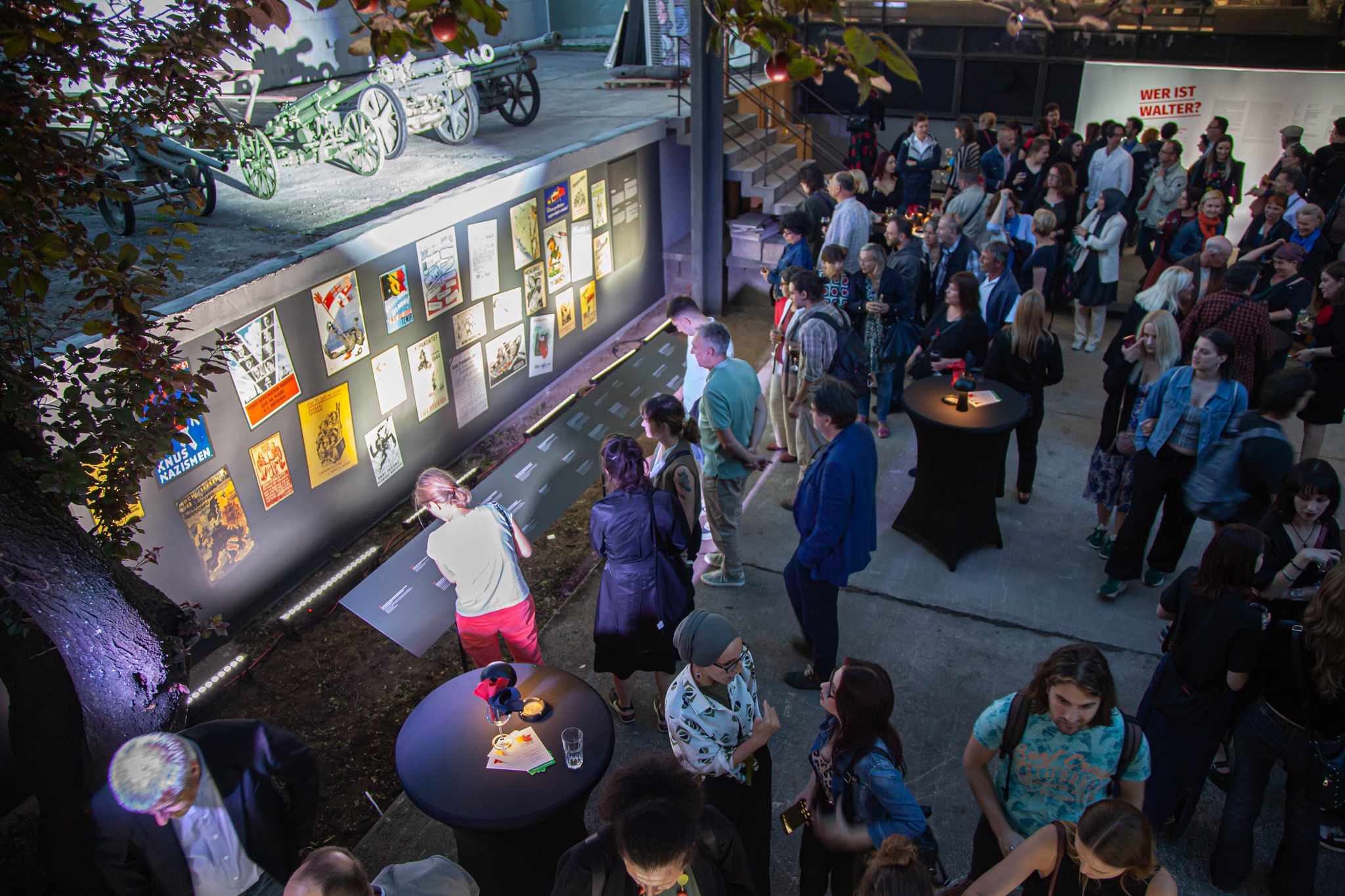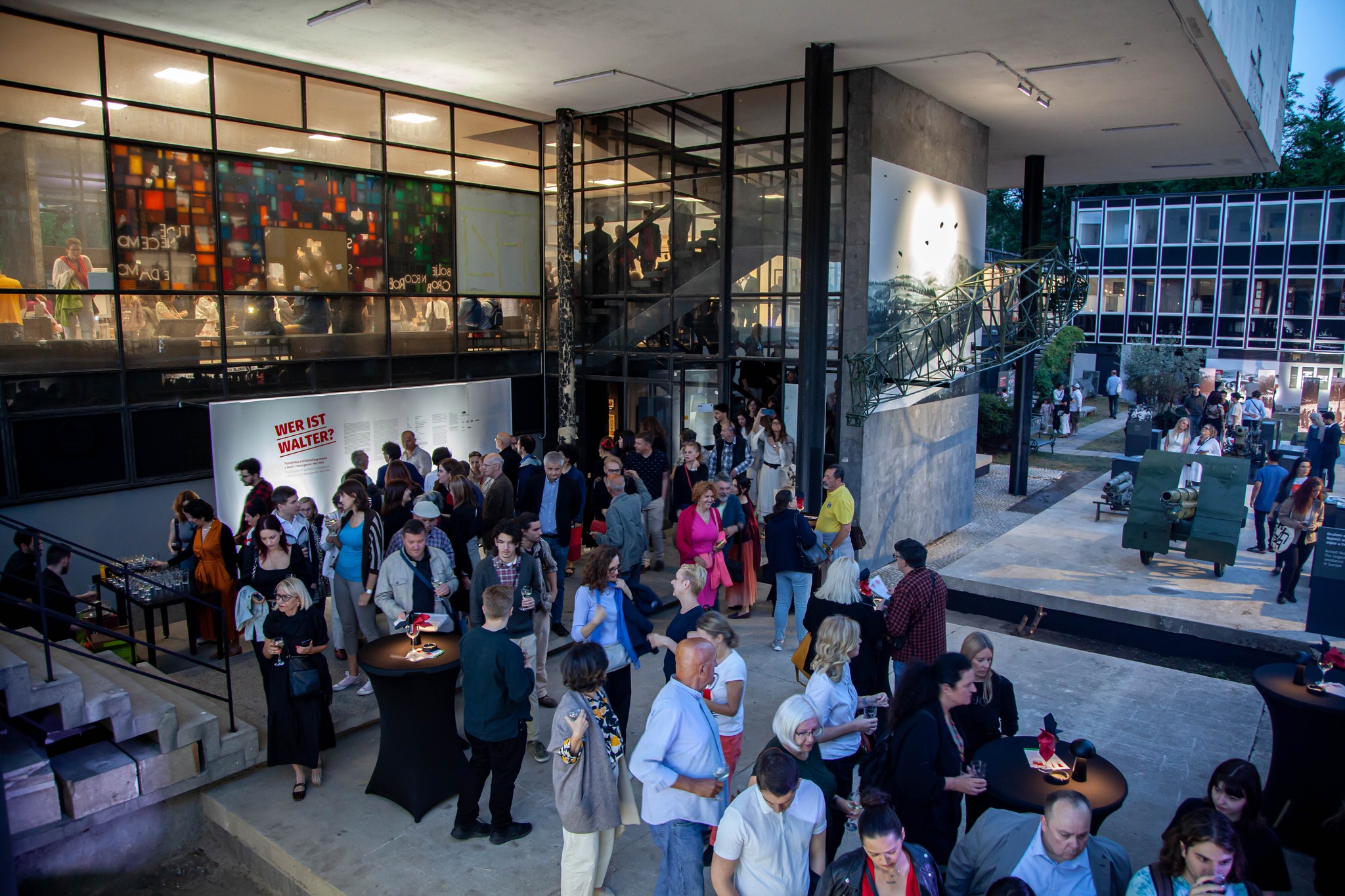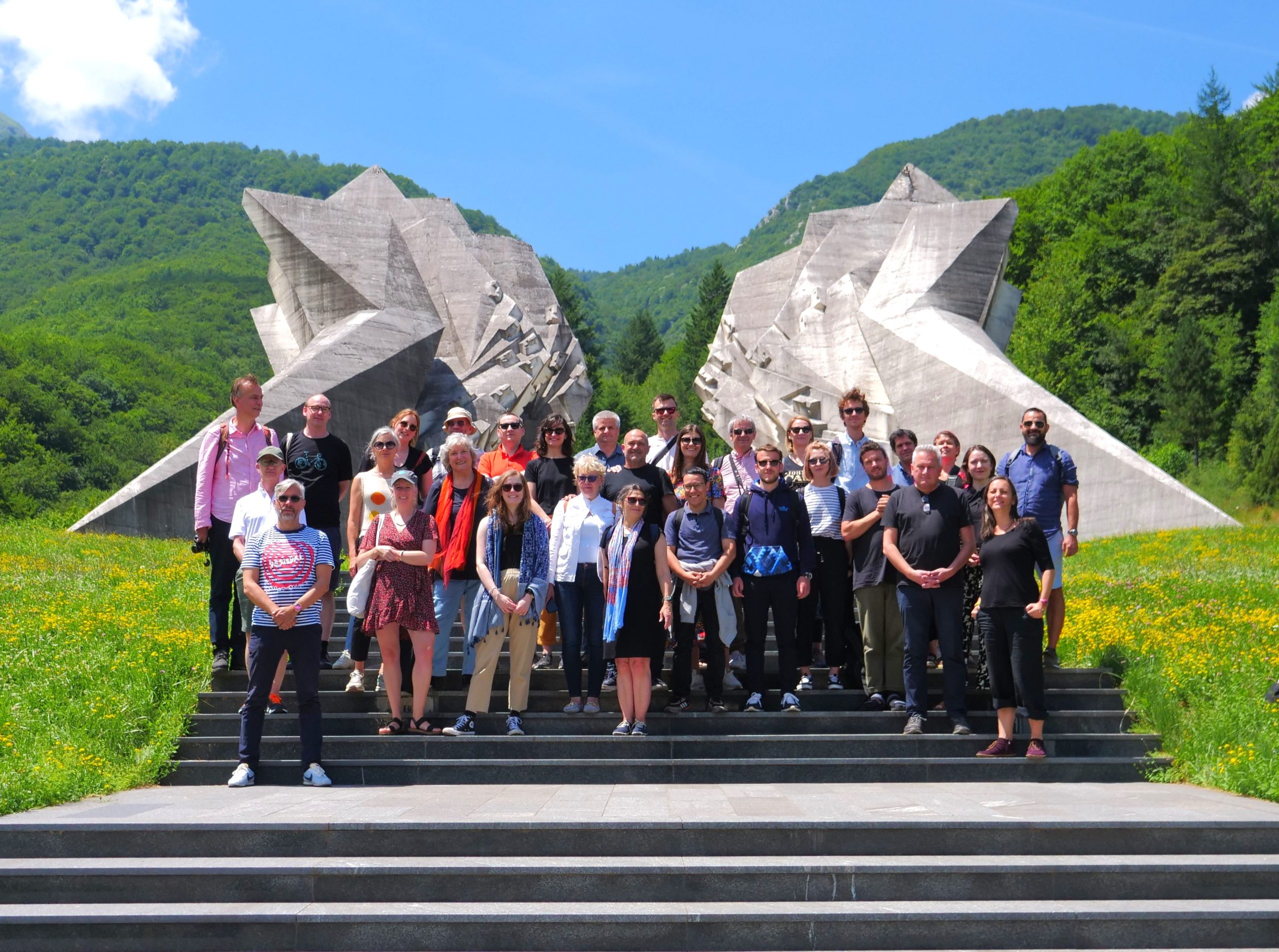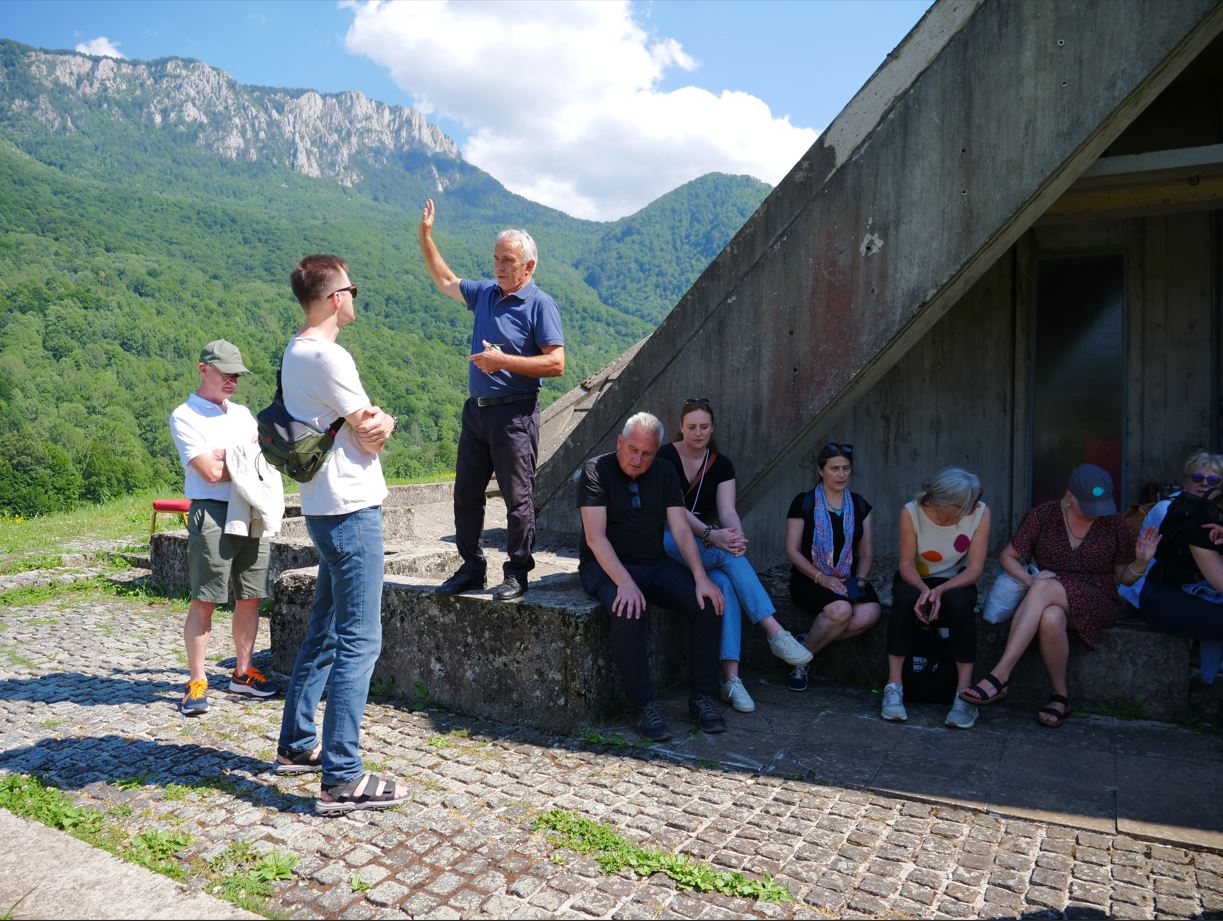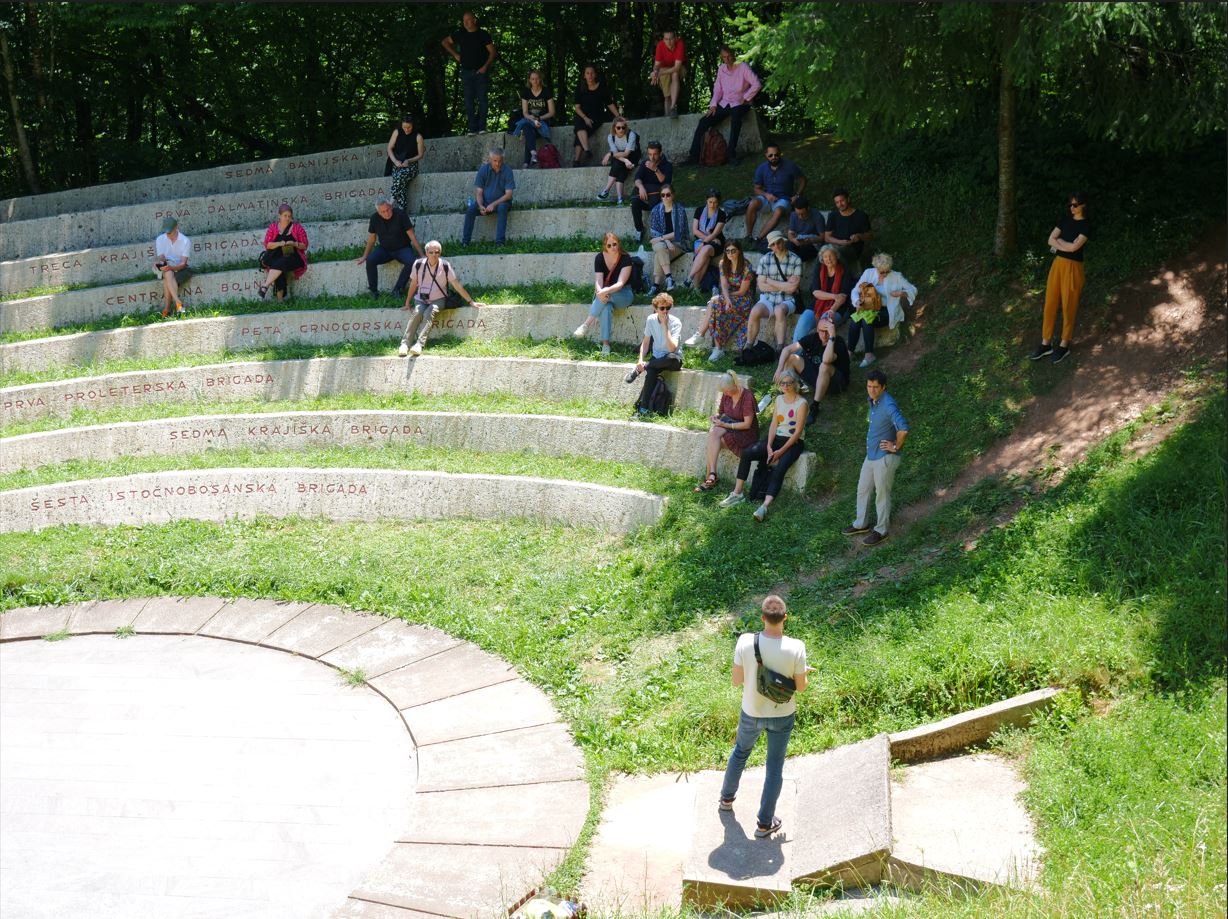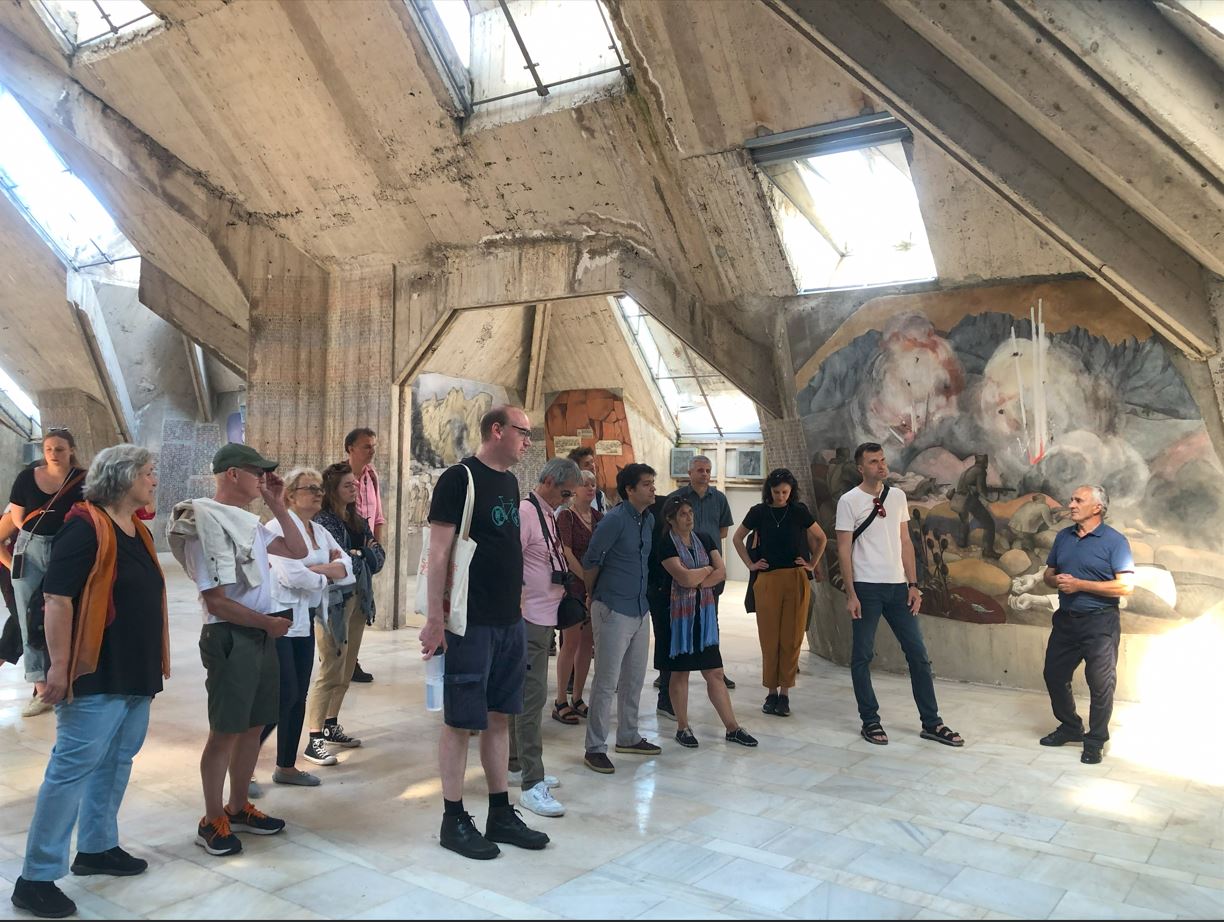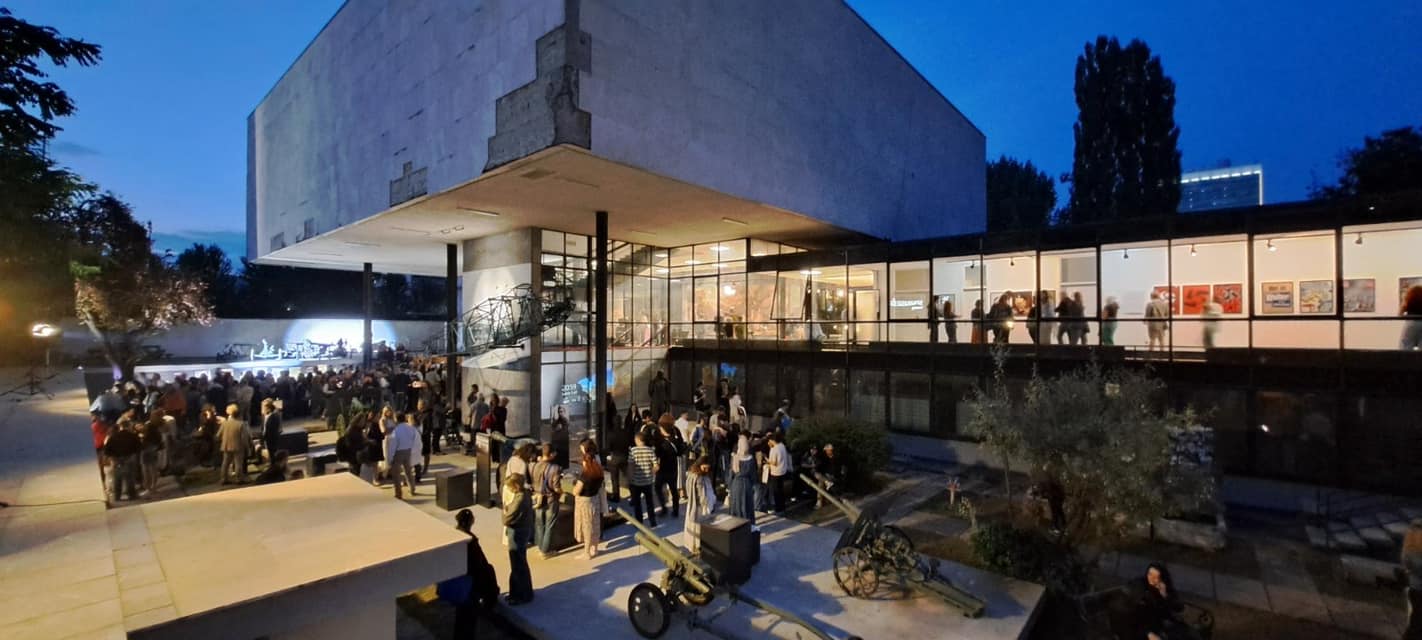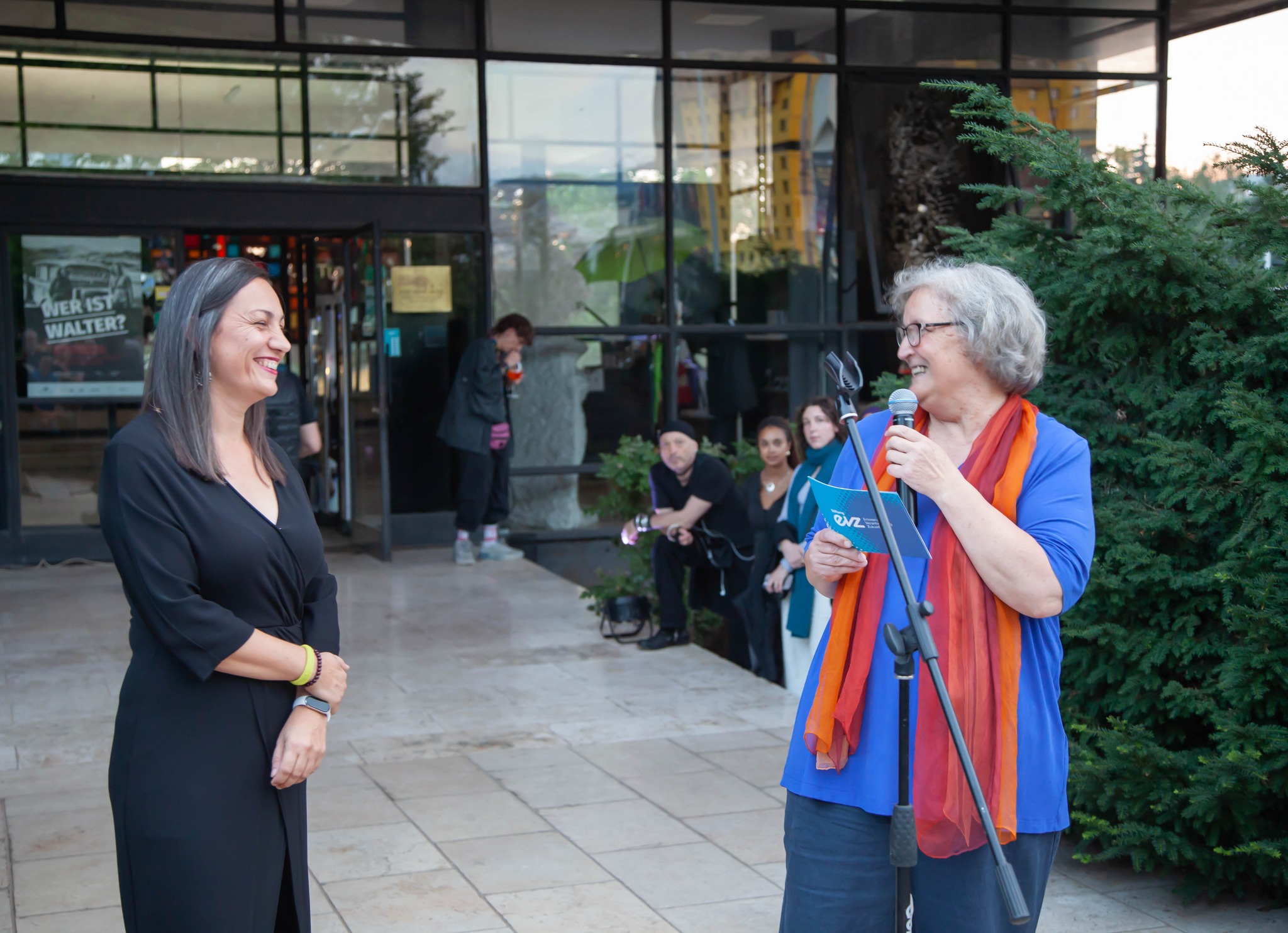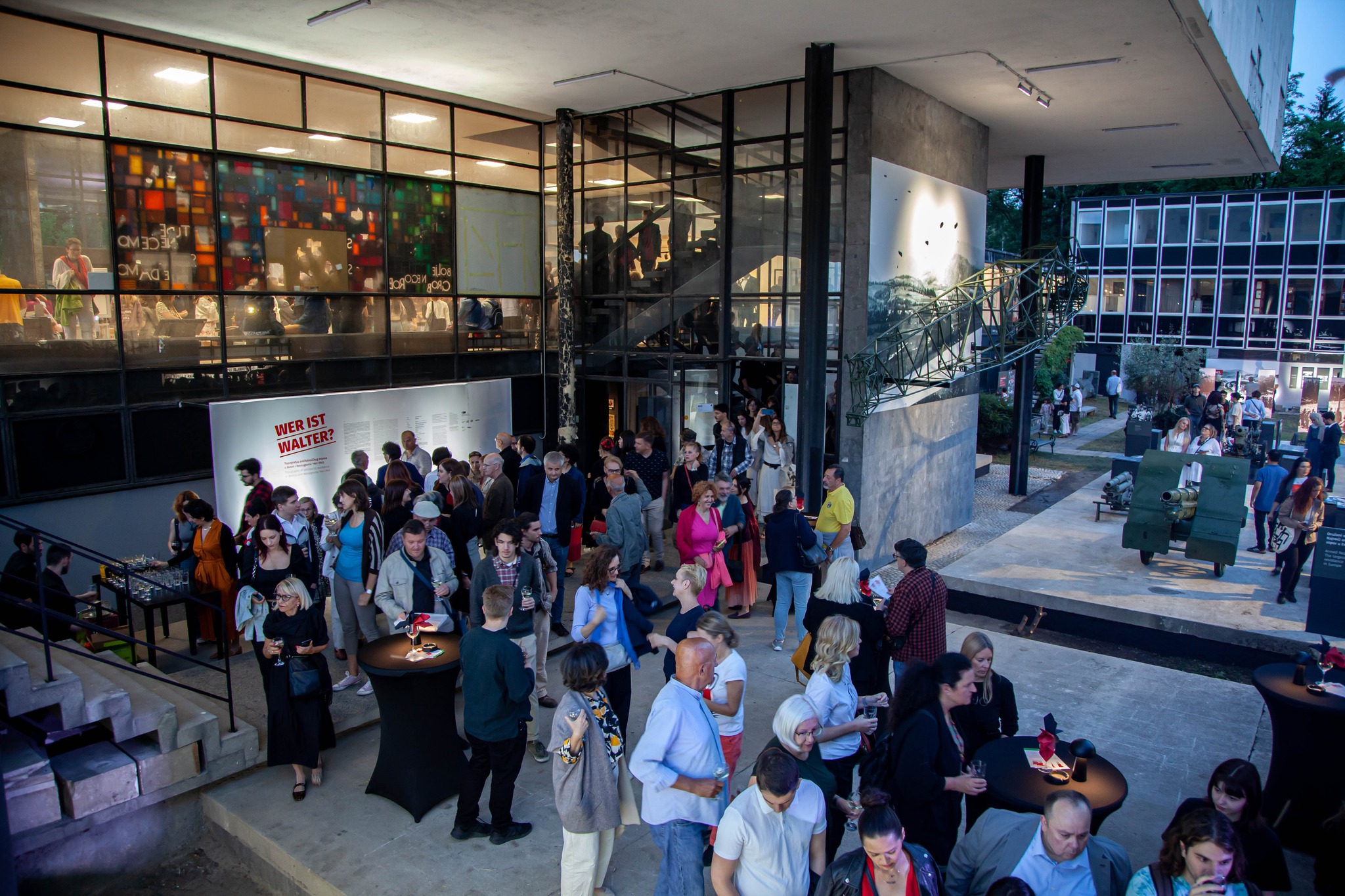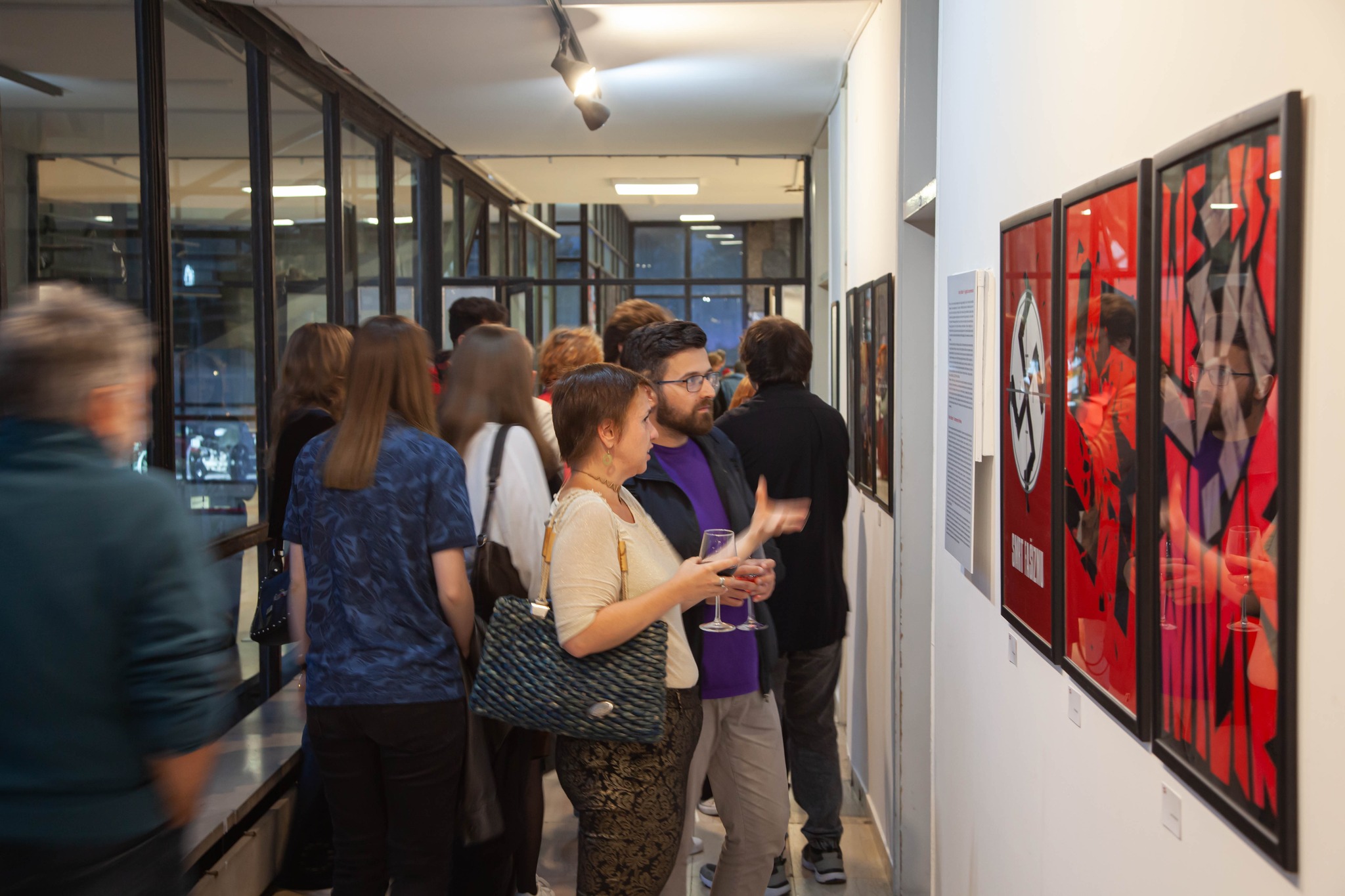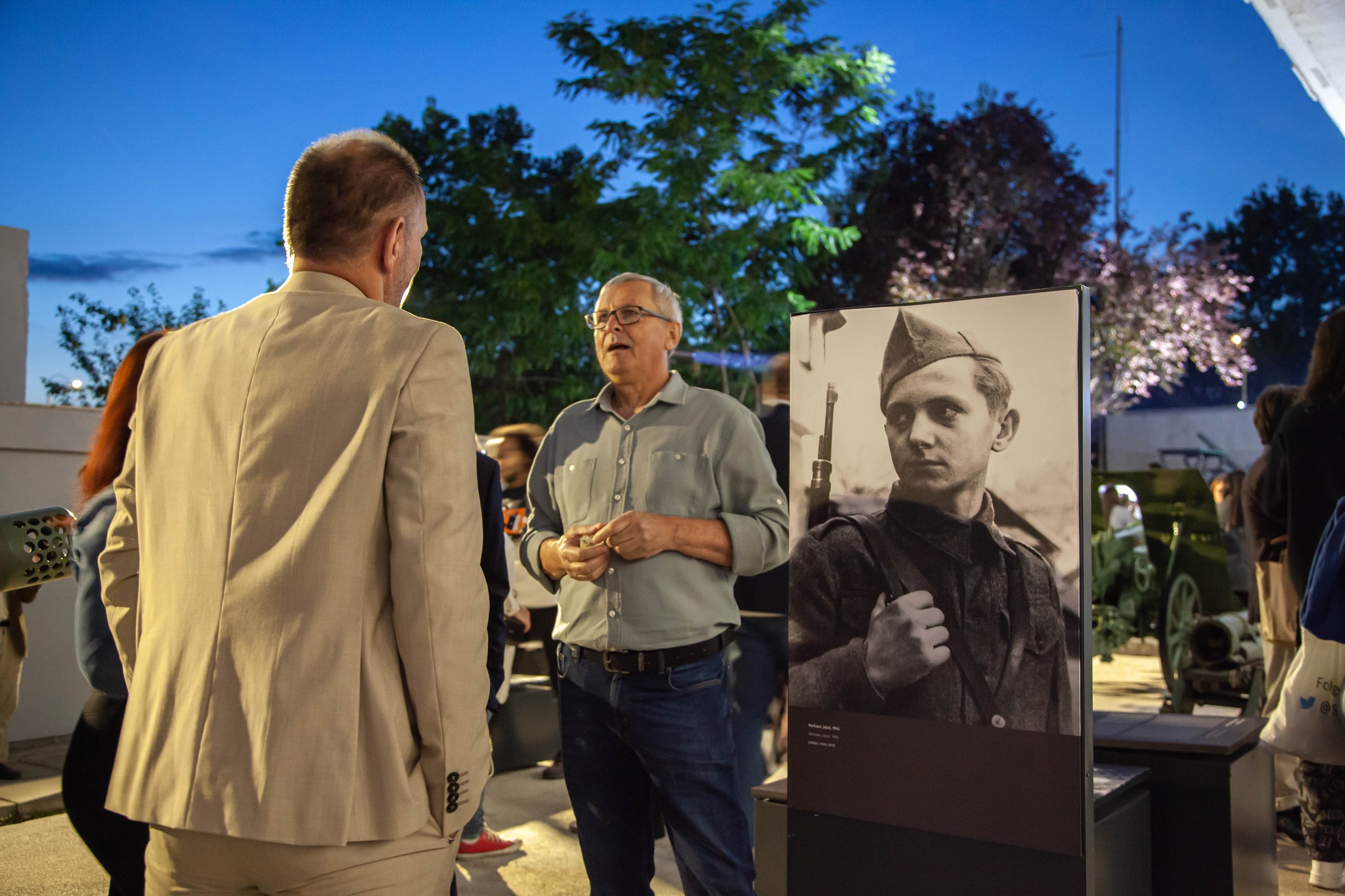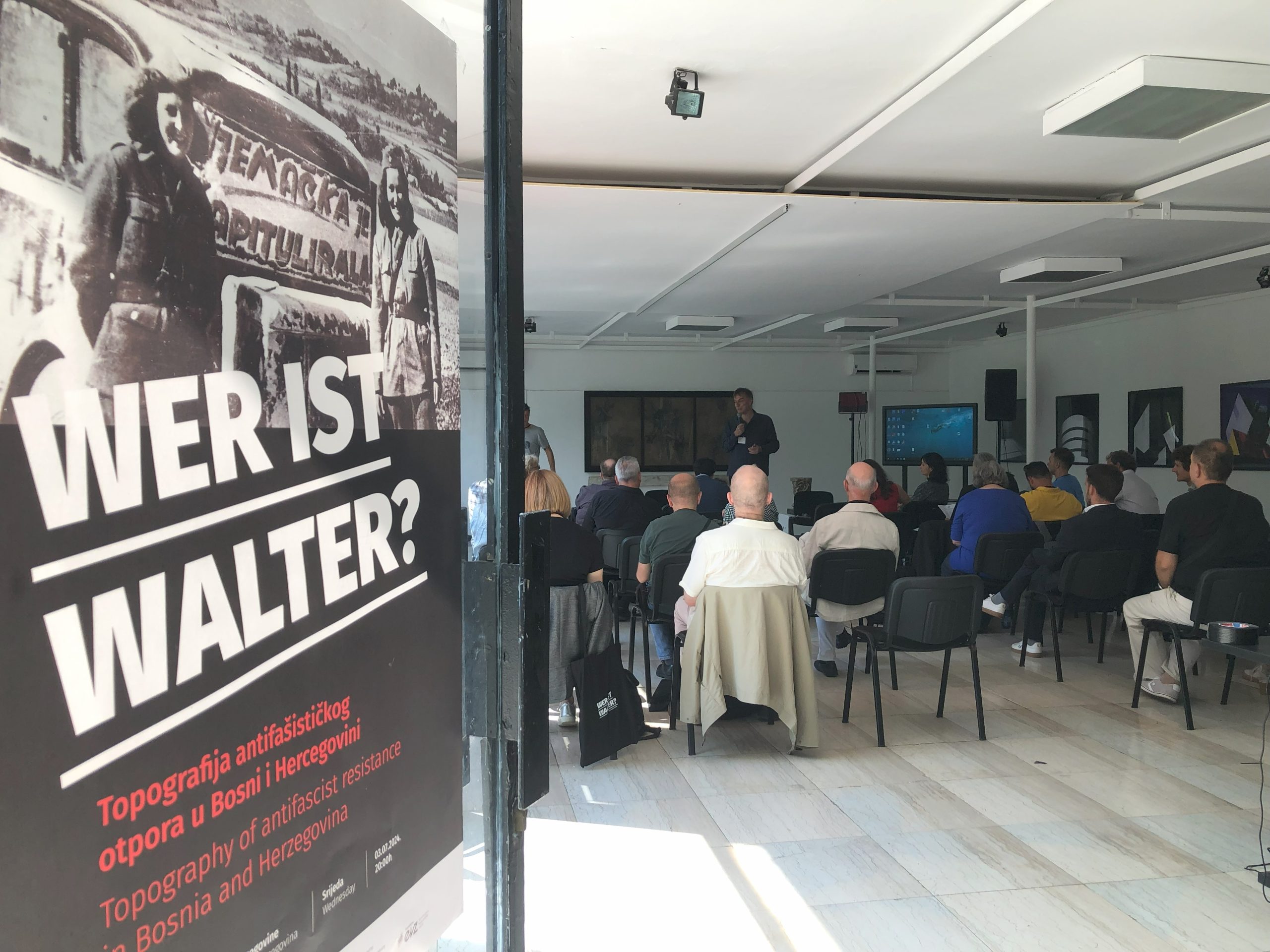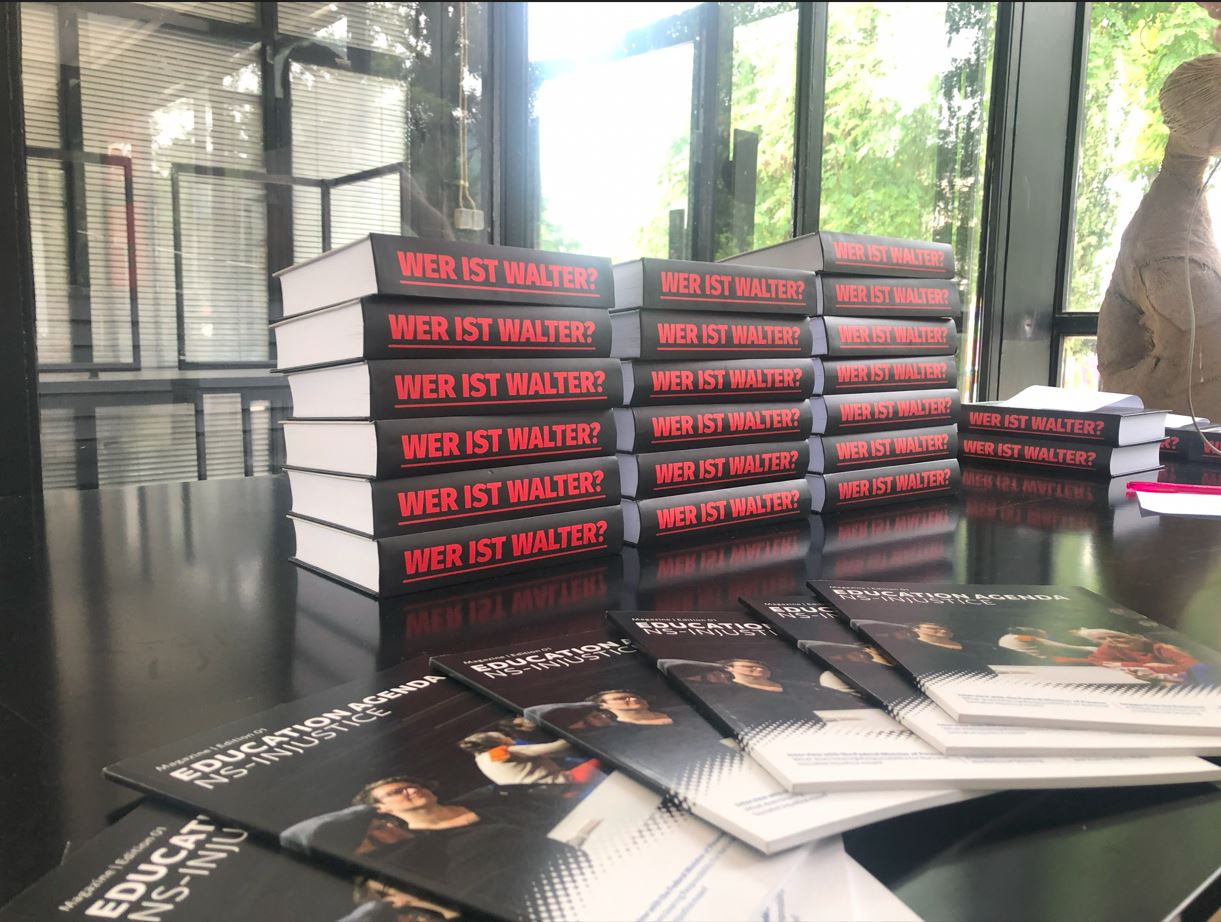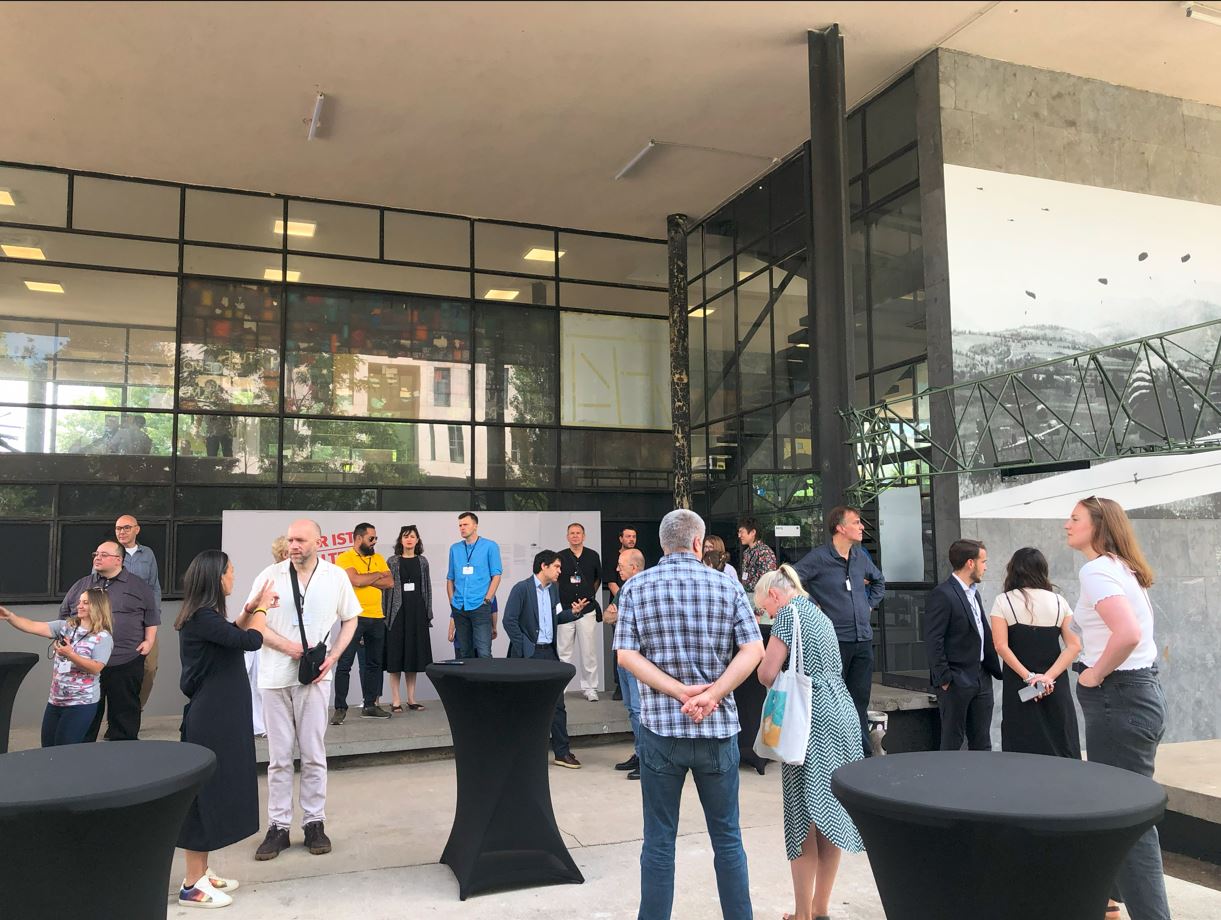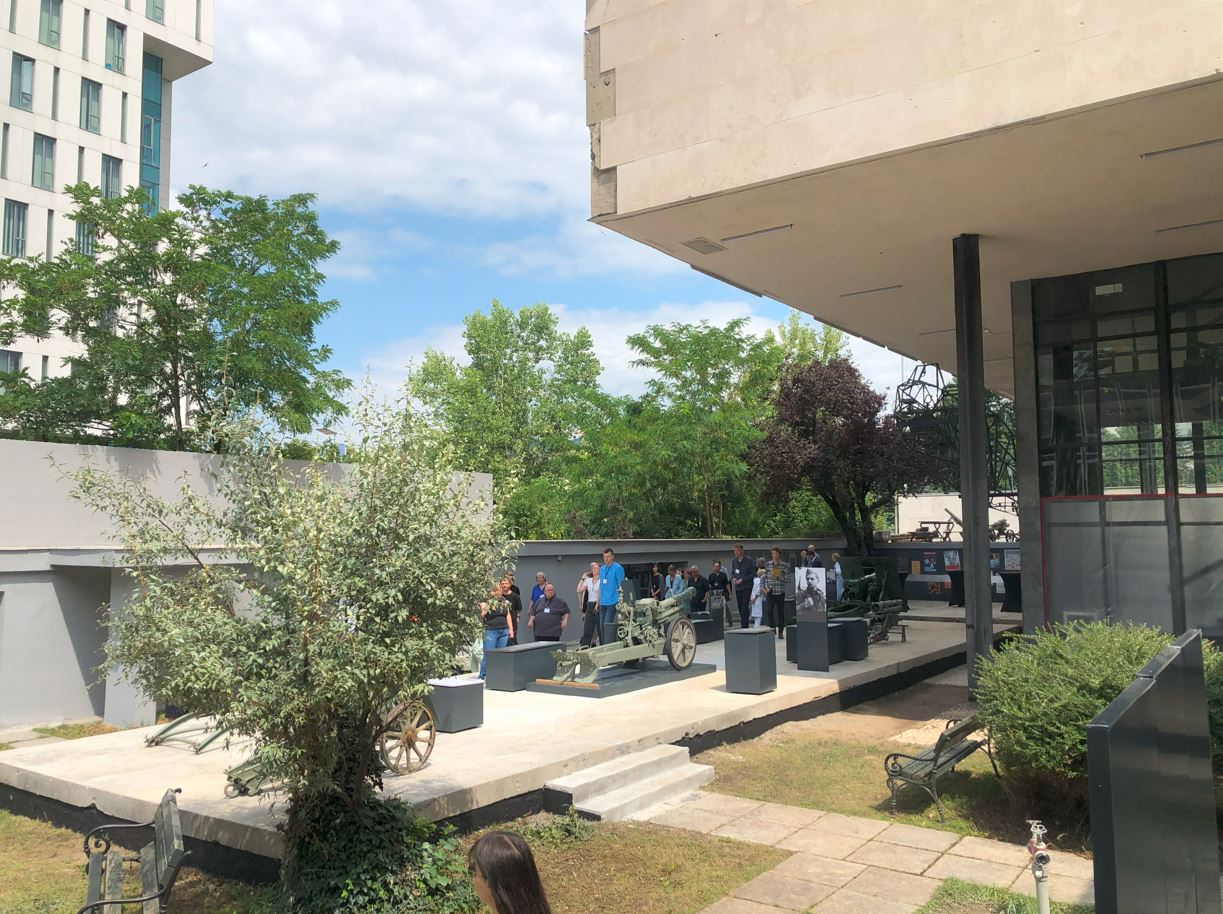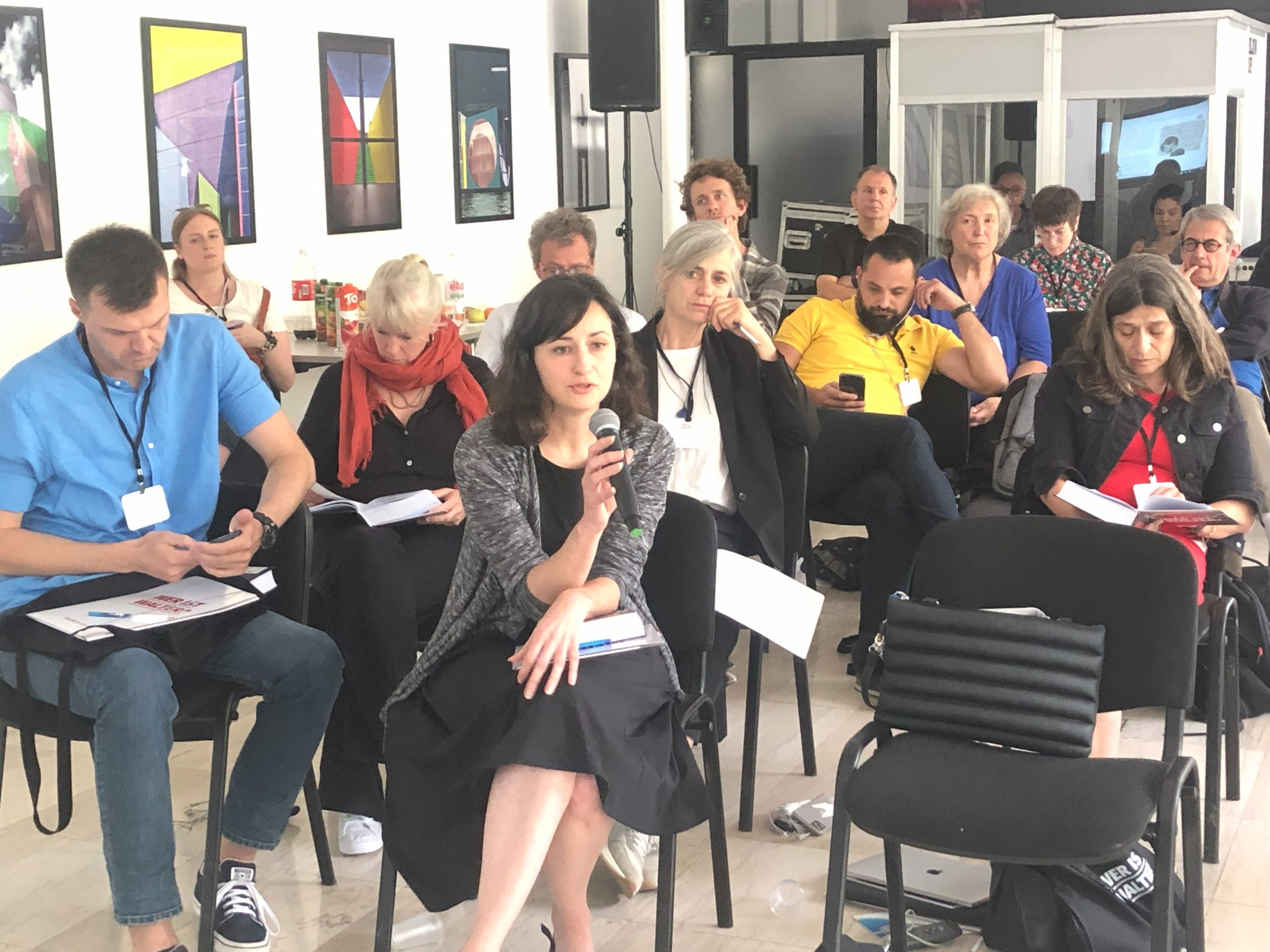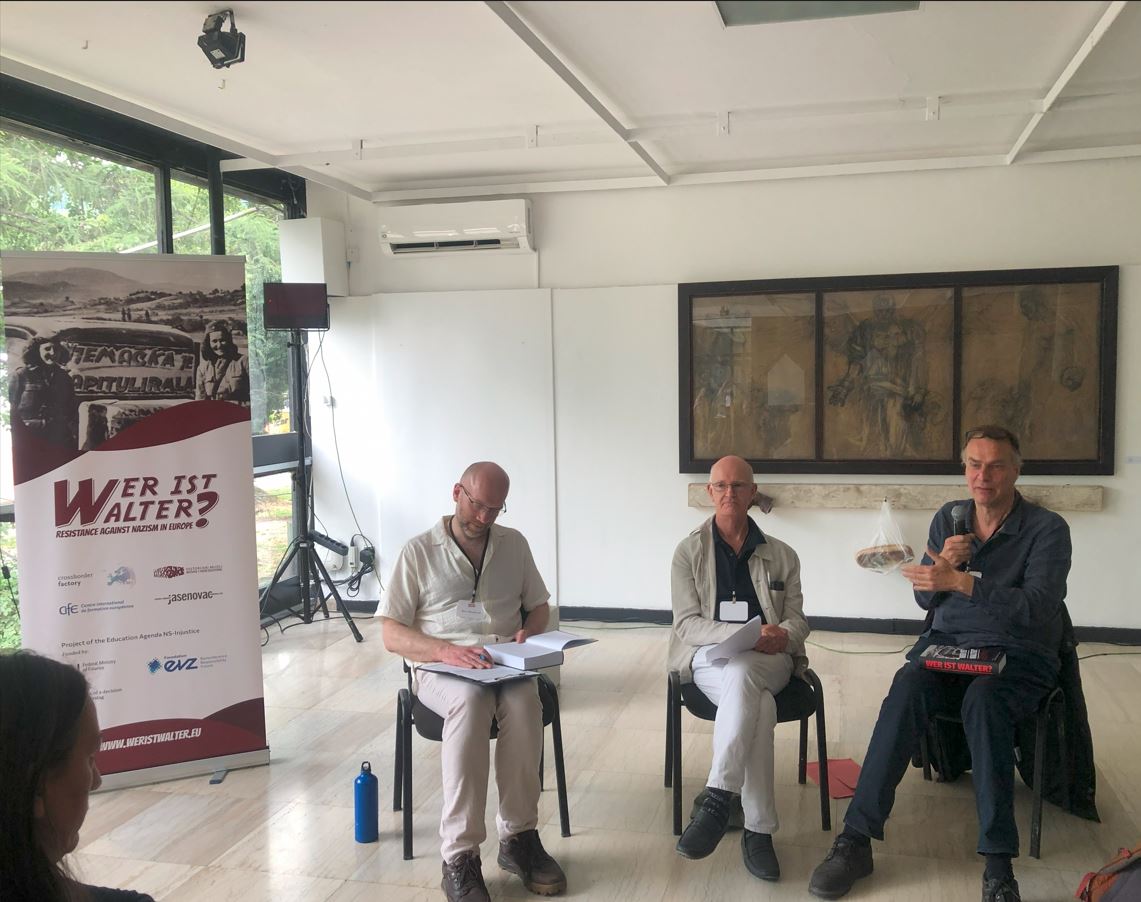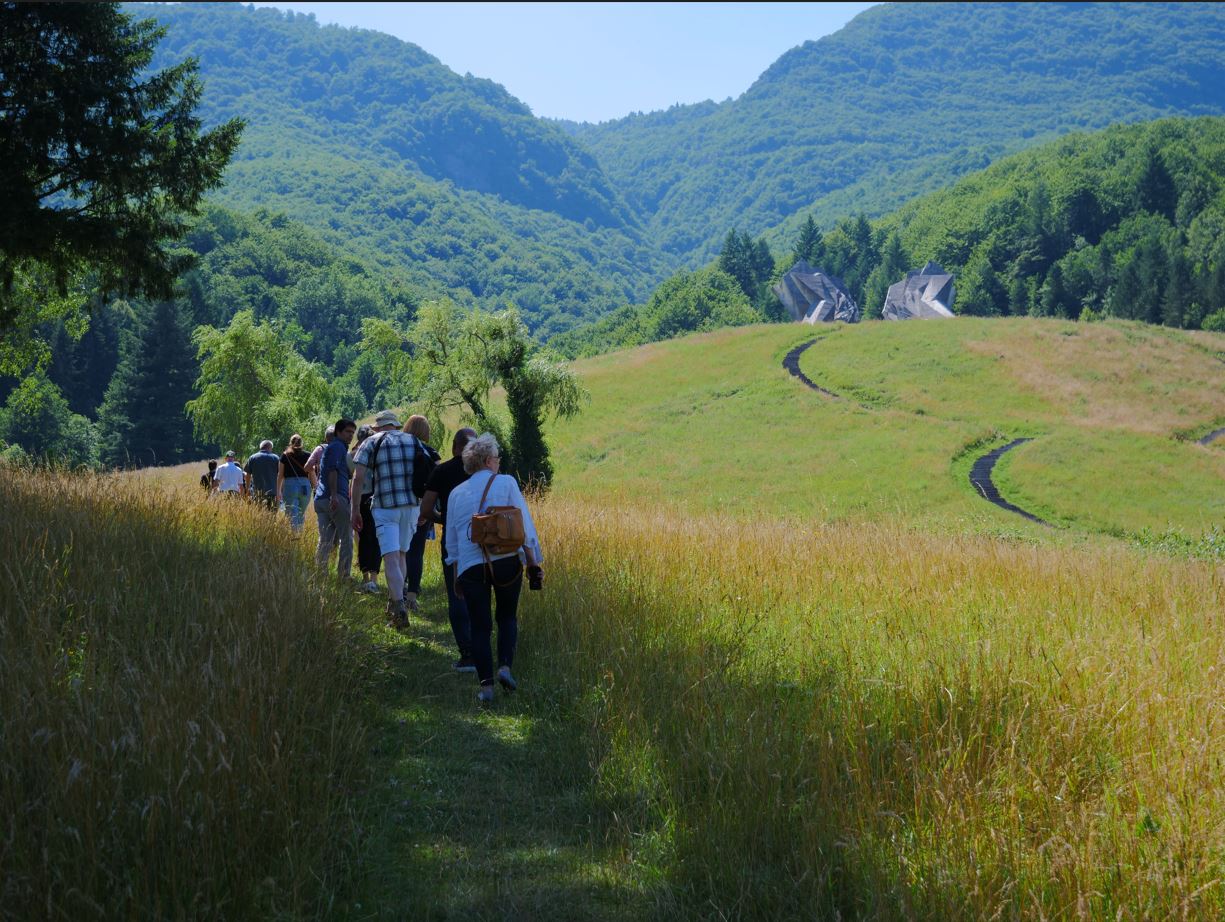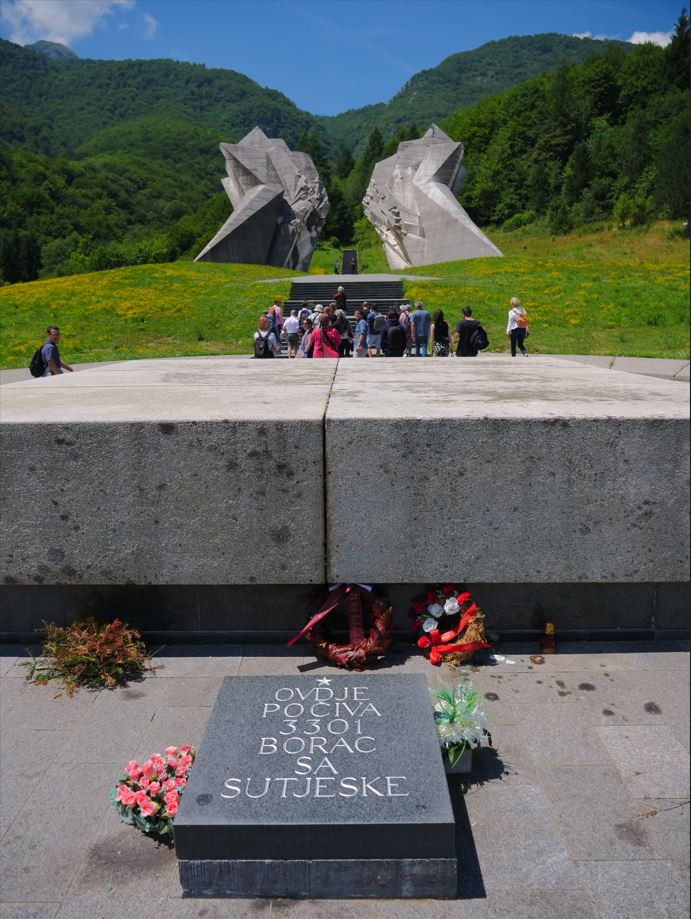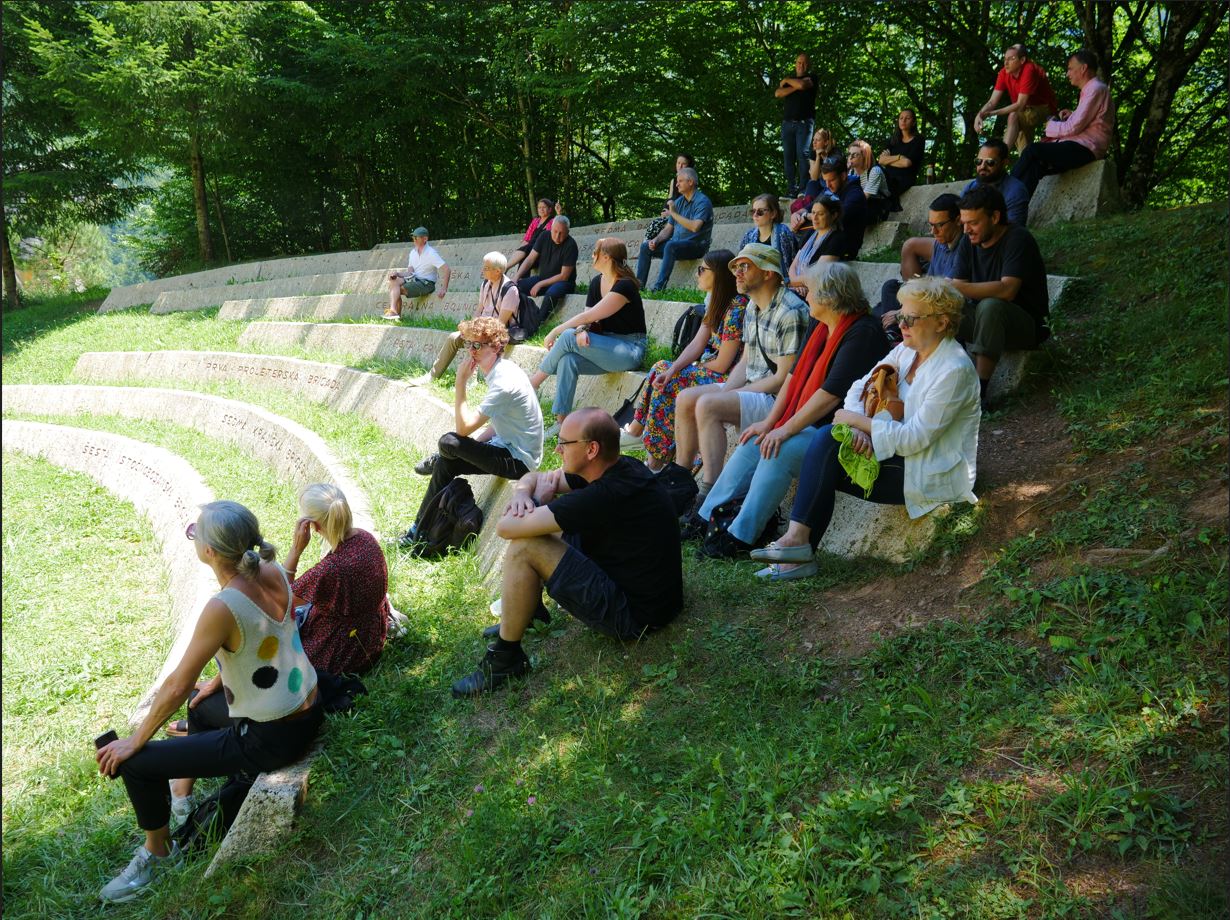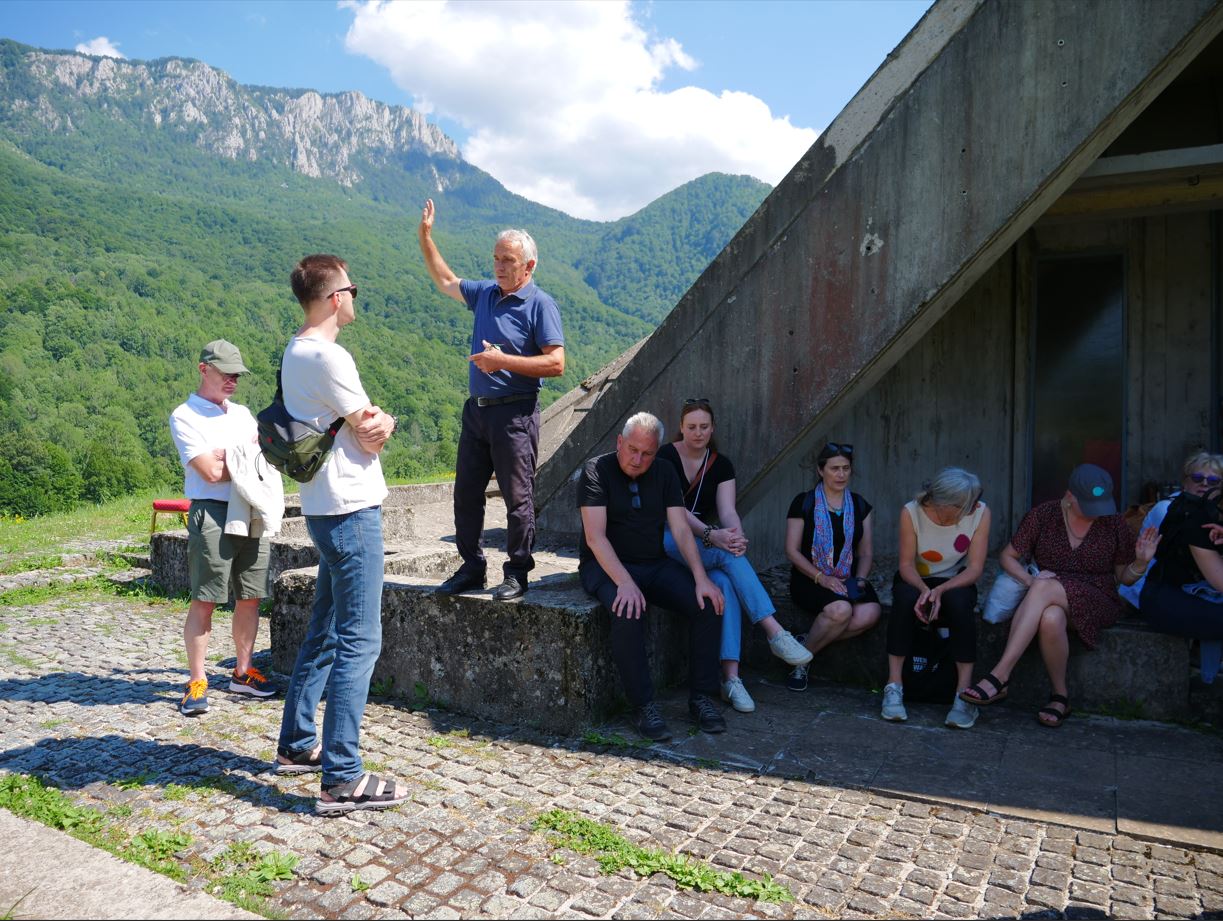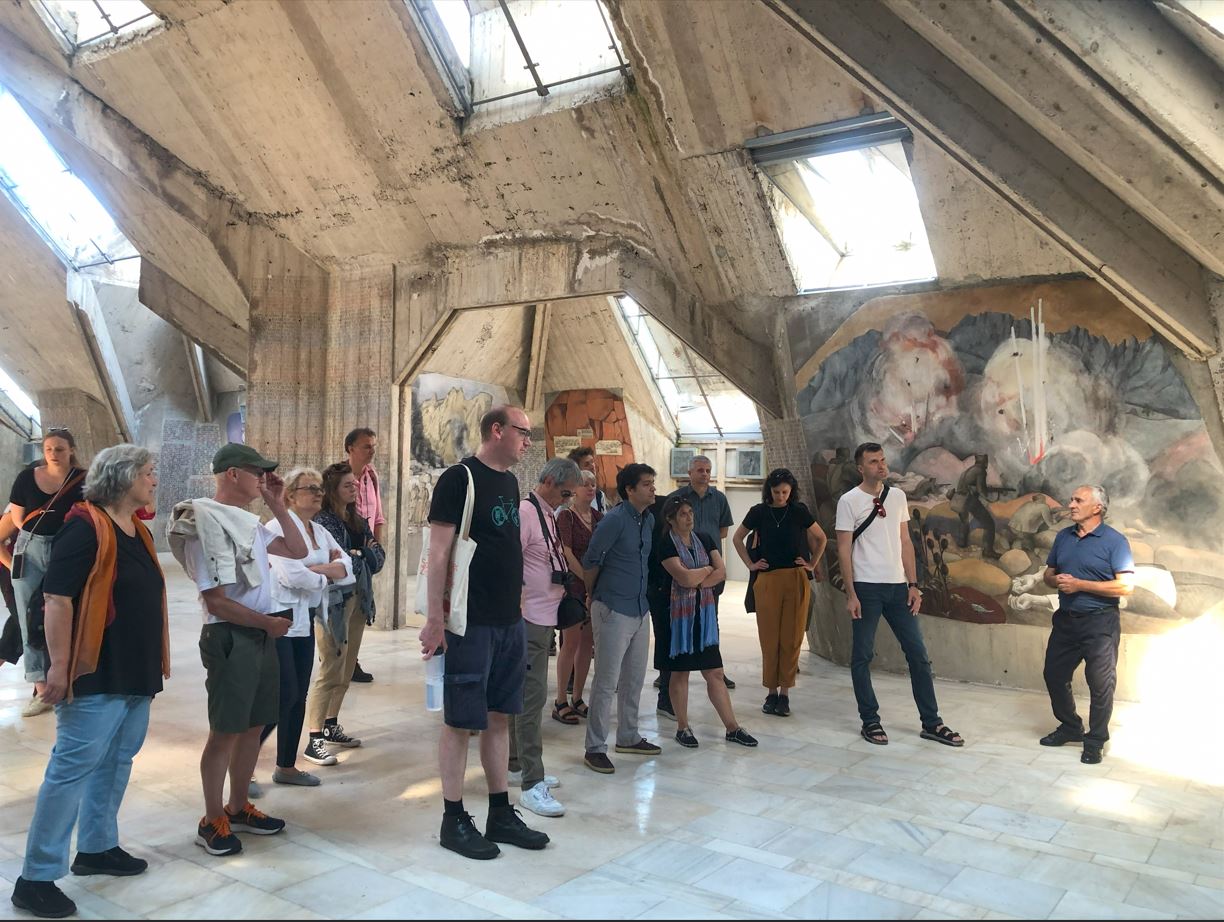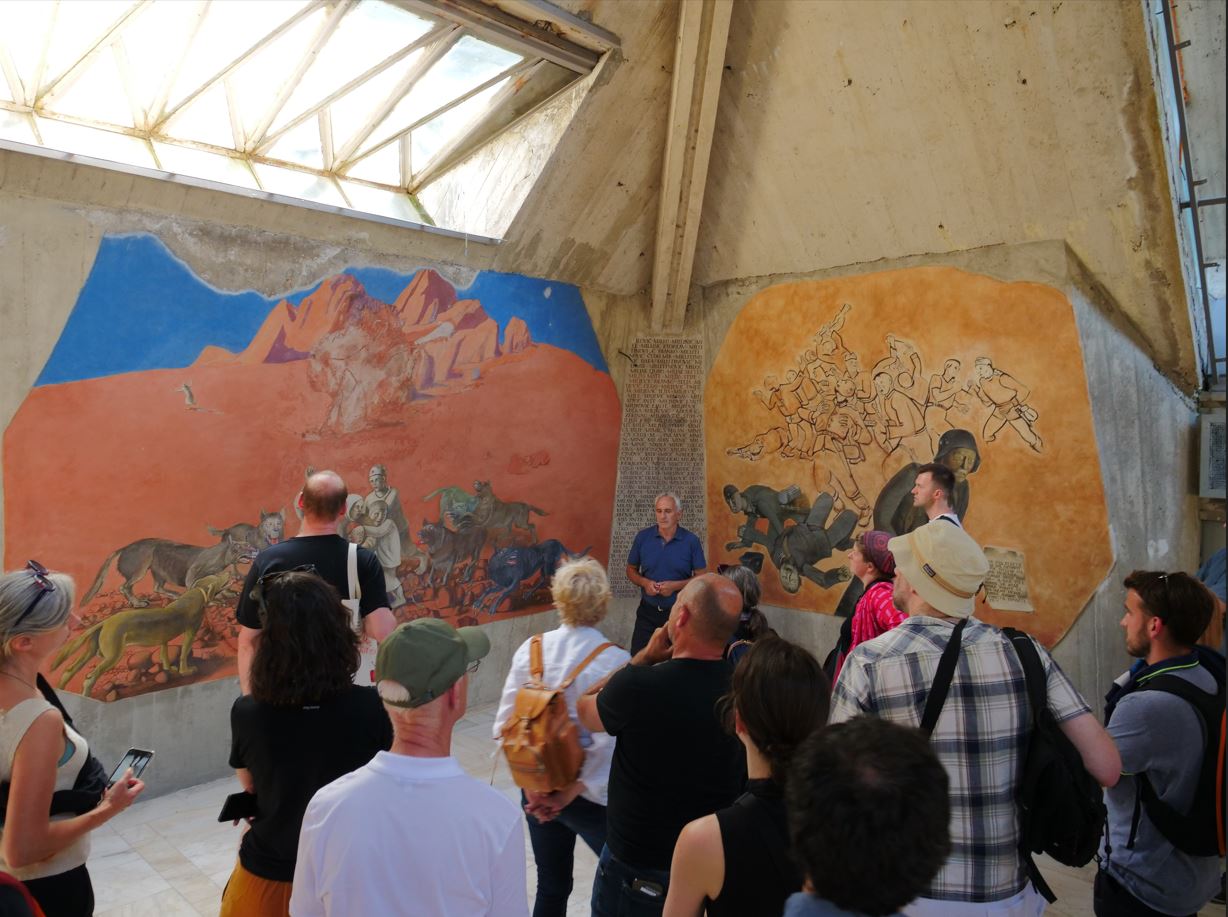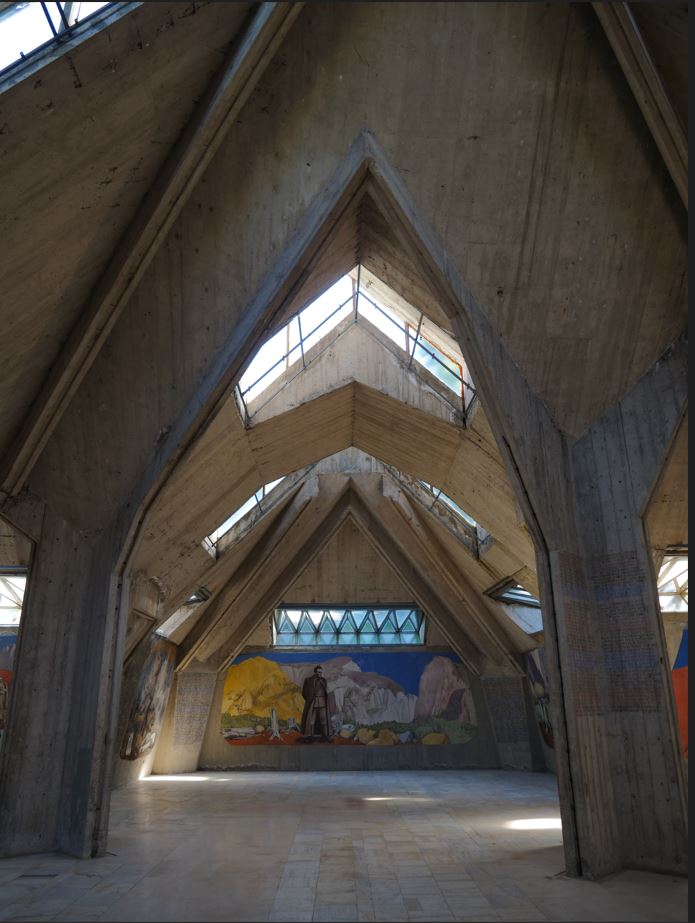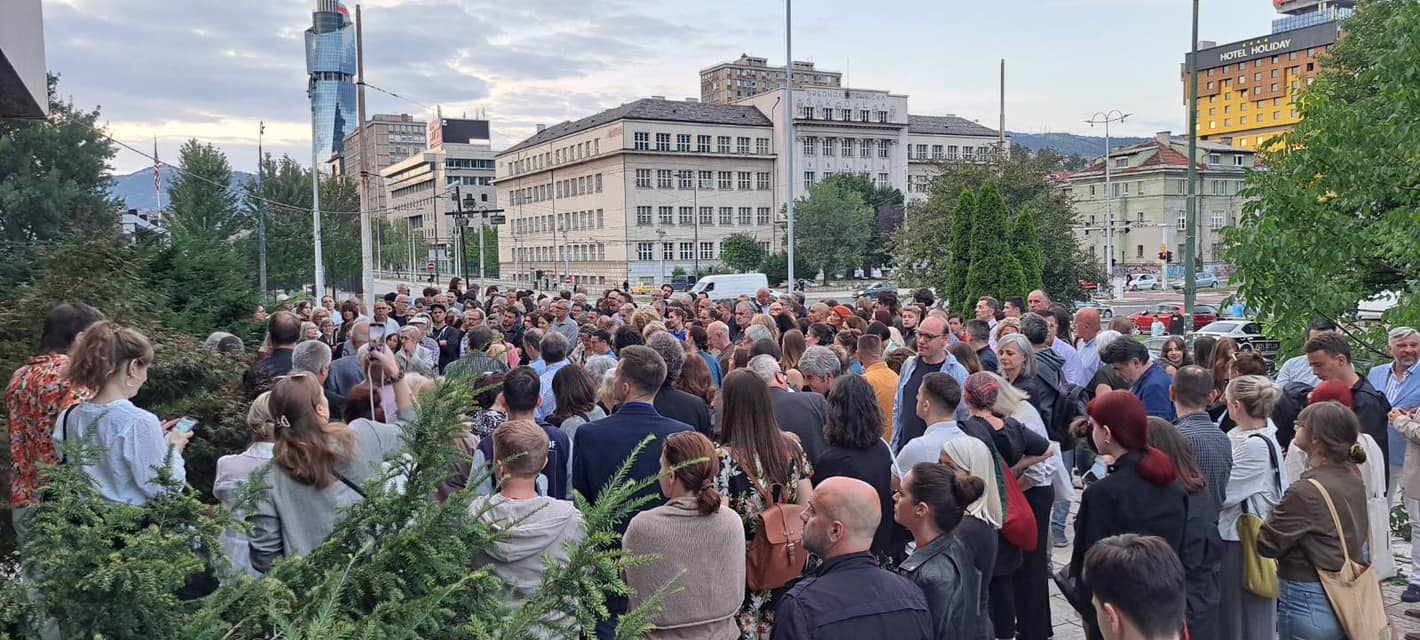
The third and final conference of the “Wer ist Water?”-project took place from 3 to 5 July 2024 in Sarajevo. We started the conference on the evening of 3rd of July with a big milestone in the project: the opening of the permanent exhibition “Wer ist Walter? Topography of Antifascist Resistance in Bosnia and Herzegovina 1941 – 1945” at the History Museum in Sarajevo.
The opening event was incredibly well attended, and we were overjoyed to welcome the first public to the exhibition. After introduction speeches by Elma Hašimbegović and Elke Braun (EVZ Foundation), visitors were welcomed by the AKCUS Seljo choir in the entry hall of the Museum. The public could then discover the new permanent exhibition in the atrium of the Museum: After an introduction which puts the antifascist resistance of the Yugoslav Partisans in its European context, the exhibition highlights several aspects which were characteristic for the fight of the Partisans against fascist occupiers and their collaborators, for example: the transformation of guerilla units into a regular army, the multiethnic character of the Partisans, the role of forests and mountains for the warfare, or the massive participation of women. The importance of this exhibition is also reflected in the fact that it is the first new permanent exhibition on this topic in a capital city of a Yugoslav successor state since the end of Yugoslavia more than 30 years ago.
In parallel, the posters made by the students of design schools from Berlin, Paris, Sarajevo and Zagreb on the topic “Wer ist Walter?” were also exhibited within the Museum.
On the next day, we deepened the discovery of the previous day with a guided tour through the exhibition by Elma Hašimbegović and the team of the museum. We then discussed questions on how to deal with resistance in museums and memorials.
In the afternoon, we presented the two other outputs and milestones of our 2-years project. We started with the launch and a presentation of the new digital and educational platform www.weristwalter.eu. The platform gathers 100 short stories dealing with resistance against Nazism, fascism, occupation and collaboration in Europe during World War II, focusing on Bonia and Herzegovina, Croatia, France and Germany. It has been especially designed for pupils, students, teachers, and everybody who wants to learn more about the subject. Pedagogical guidelines help visitors to find their way through the platform, to work with the stories and to question their vision of resistance.
We followed up this presentation with a stimulating open discussion on dealing with resistance in formal and informal education. We then ended the workday with a presentation of the new edited volume “Wer ist Walter? International Perspectives on Resistance in Europe during World War II”. This scientific publication gathers 32 contributions and case studies on the history of resistance against Nazism, fascism, occupation and collaboration during World War II, as well as on its transmission after 1945, especially in Museums. The authors who contributed to the book are historians, curators and other researchers from Bosnia and Herzegovina, Croatia, France, Germany, Serbia and other countries.
The session started with introductory remarks by Ben H. Shepherd (Glasgow Caledonian University) and William N. Niven (Nottingham Trent University) about the book, what was followed by a more general discussion about historiographical research on resistance.
During the second day of our conference, we organised a bus trip to Eastern Bosnia in order to visit the Memorial Complex to the Battle of Sutjeska, which refers to one of the most difficult and important battles of World War II in Yugoslavia. We explored the Memorial complex, including the ossuary from 1958 hosting the remains of 3301 soldiers, and the impressive monument built in 1971 and designed by Miodrag Živković, with precious information and specific contextualization by our expert-team-members Sanja Horvatinčić and Vladan Vukliš. Later on, Miloš Živanović from the National Park Sutjeska guided us trhough the Memorial House, created in 1974 by Ranko Radović, which stands as a tribute and commemoration to the victims of the Battle. The interior of the Mmeorial House conatins the over 7000 engraved names of fallen Partisan soldiers and 13 large frescoes painted by the Croatian artist Krsto Hegedušić.
Besides the members of the project- and the expert team, the conference was attended by other renowned historians, researchers and curators from the region and entire Europe, among them Jens-Christian Wagner, director of the Buchenwald Memorial, Gaj Trifkovic, author of the book “Sea of Blood: A Military History of the Partisan Movement in Yugoslavia 1941-1945”, Xavier Bougarel, author of “Among Tito’s partisans: Communists and peasants in war-torn Yugoslavia (1941-1945)”, Ben H. Shepherd, author of “Terror in the Balkans. German armies and Partisan warfare” and co-editor of “European Resistance in the Second World War”, or Cornelia Siebeck, from the Berlin-based Memorial “Topography of Terror”.
After the conference we received very positive feedback from the participants – here some examples:
“The programme couldn’t be better! Overall there was an excellent, balanced blend of high-quality activities. A very big well done to everyone involved in putting together the programme, and in the general organization.“ „The atmosphere at the conference was great, full of new and old friendships. The debates were interesting and constructive.“ “The conference was extremely well organized. The atmosphere was great and I learnt a lot – about the past, but also about the present (in Sarajevo, Bosnia …). I am especially grateful for our visit to the Monument to the Battle of Sutjeska. I am still digesting this visit and the many layers of history we encountered there.”
The quality of the three results of the project was also emphasized:
“The exhibition is excellent in terms of both layout and content. The exhibition was imaginatively set out in the open space, in a way that invites contemplation as well as engagement with the exhibition itself. Excellent balance of written information, images and varied artefacts.” “The exhibition in the Historical museum of Bosnia and Herzegovina is an impressive realization. It allows a reconnection with the history of the museum and of its collections, and is a courageous way of dealing with the past of ex Yougoslavia. The rehabilitation of the atrium, the use of the space, the choice of the visual scenery with the impact of photos are good assets.“
“The digital platform is very well set out. I think the thematic arrangement of the various stories works really well, and provides a great many possibilities for developing exercises with students. It will be a very valuable resource for my own teaching.” “It is a great educational resource that can complement the museum visit and can be used in educational purposes. It can also be used in classrooms for motivating students to come and see the exhibition. The fact that you have managed to collect 100 stories is really impressive. I have read some of them thinking: how come I didn’t know about this before? Anyway, I have much to learn.“
“The edited volume, which is more aimed at the academic audience, is certainly a valuable contribution to this field of research which has not been in the focus of a lot of academic attention. The variety of topics covered in the book make it a useful resource for academics from different disciplines.” “The book gathers a significative number of contributions from different points of view, and is a model of transnational approaches. It reintroduces the history of Yugoslav Partisans in an European scale. It deserves to be publicized in universities and libraries in Europe.”
Regarding the overall project, one participant wrote: „It’s rare to see a project of this scale achieve such results in such a short space of time – two years.” And another participant underlines the importance of the different outputs: “I think it was a great idea to create all three, the book, the exhibition and the digital platform, as they are complementary. I really hope you will manage to promote the results of the project further, because these are all valuable teaching and research resources and should be given more attention.”
After these two days of fascinating discussions and discoveries, we are both proud and sad to have brought this project to a successful conclusion. Besides the 3 outputs, a lot of contacts have been created within these two years. We hope that the project will inspire other researchers and young people to explore other aspects of this part of our shared past. And even if the project has officially come to an end, we will of course continue to work with the outputs of the project in order to deepen research and reflection on the topic of resistance during World War II and to motivate more people to work on this topic and on its meaning today.


